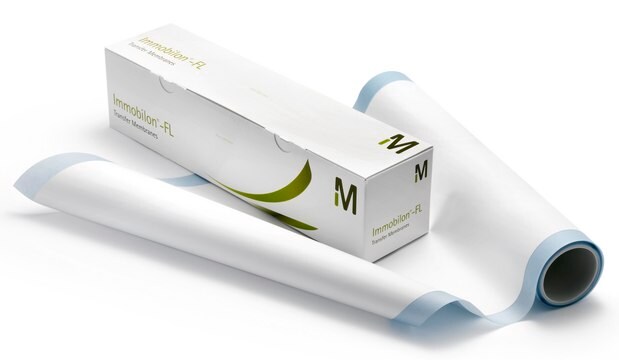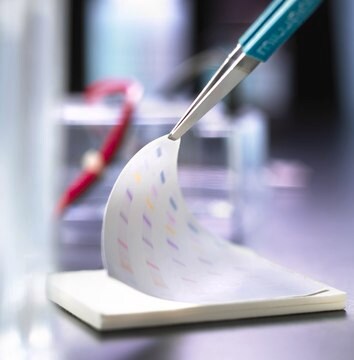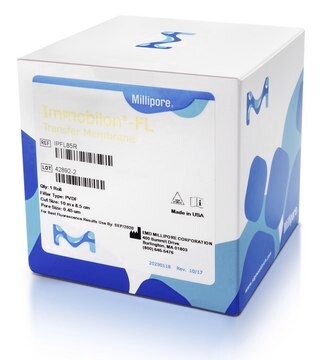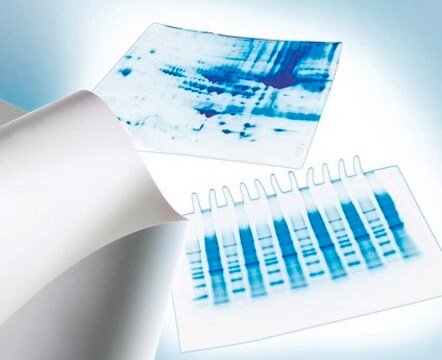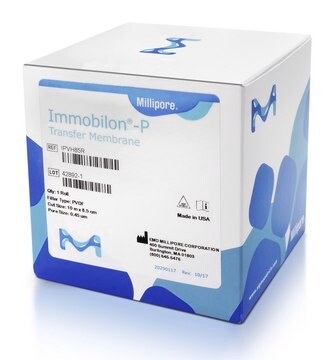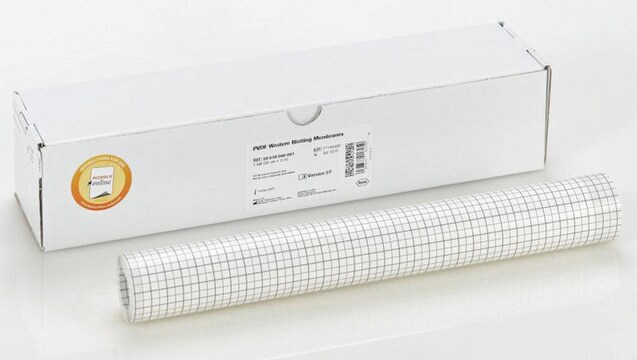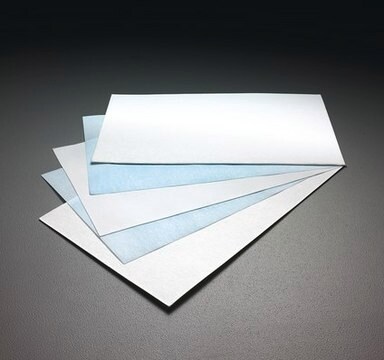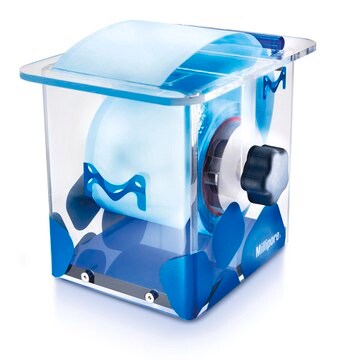IPFL10100
Immobilon® -FL PVDF Membrane
10 sheets, 10 cm x 10 cm, 0.45 µm pore size, transfer membrane with low background fluorescence
Synonyme(s) :
Western blotting membrane, blotting membrane, transfer membrane
About This Item
plain filter
white filter
colorimetric
fluorometric
for use with CPTS
for use with Coomassie brilliant blue
for use with Ponceau-S red
Produits recommandés
Nom du produit
Immobilon®-FL PVDF Membrane, 10 sheets, 10 cm x 10 cm, 0.45 µm pore size, Hydrophobic PVDF Transfer Membrane with low background fluorescence for Western blotting. Compatible with visible and infrared fluorescent probes.
Matériaux
PVDF membrane
plain filter
white filter
Niveau de qualité
Caractéristiques
hydrophobic
Fabricant/nom de marque
Immobilon®
Technique(s)
dot blot: suitable
western blot: suitable
Filtre, L × l
10 cm × 10 cm
Dimension de pores
0.45 μm pore size
Capacité
155 μg/cm2 adsorption capacity (insulin)
205 μg/cm2 adsorption capacity (BSA)
300 μg/cm2 adsorption capacity (goat IgG)
Compatibilité
for use with Amido black
for use with CPTS
for use with Coomassie brilliant blue
for use with Ponceau-S red
Méthode de détection
chemiluminescent
colorimetric
fluorometric
Conditions d'expédition
ambient
Description générale
Application
Caractéristiques et avantages
- The first transfer membrane designed for fluorescence applications Extremely low background improves the sensitivity of all fluorescence detection protocols
- Compatible with all commonly used fluorescent probes at all excitation and emission wavelengths
- compatible with standard blocking agents and buffers
- Ideal for multiplexing and chemifluorescence detections
Informations légales
Code de la classe de stockage
11 - Combustible Solids
Classe de danger pour l'eau (WGK)
WGK 3
Point d'éclair (°F)
Not applicable
Point d'éclair (°C)
Not applicable
Certificats d'analyse (COA)
Recherchez un Certificats d'analyse (COA) en saisissant le numéro de lot du produit. Les numéros de lot figurent sur l'étiquette du produit après les mots "Lot" ou "Batch".
Déjà en possession de ce produit ?
Retrouvez la documentation relative aux produits que vous avez récemment achetés dans la Bibliothèque de documents.
Les clients ont également consulté
Notre équipe de scientifiques dispose d'une expérience dans tous les secteurs de la recherche, notamment en sciences de la vie, science des matériaux, synthèse chimique, chromatographie, analyse et dans de nombreux autres domaines..
Contacter notre Service technique